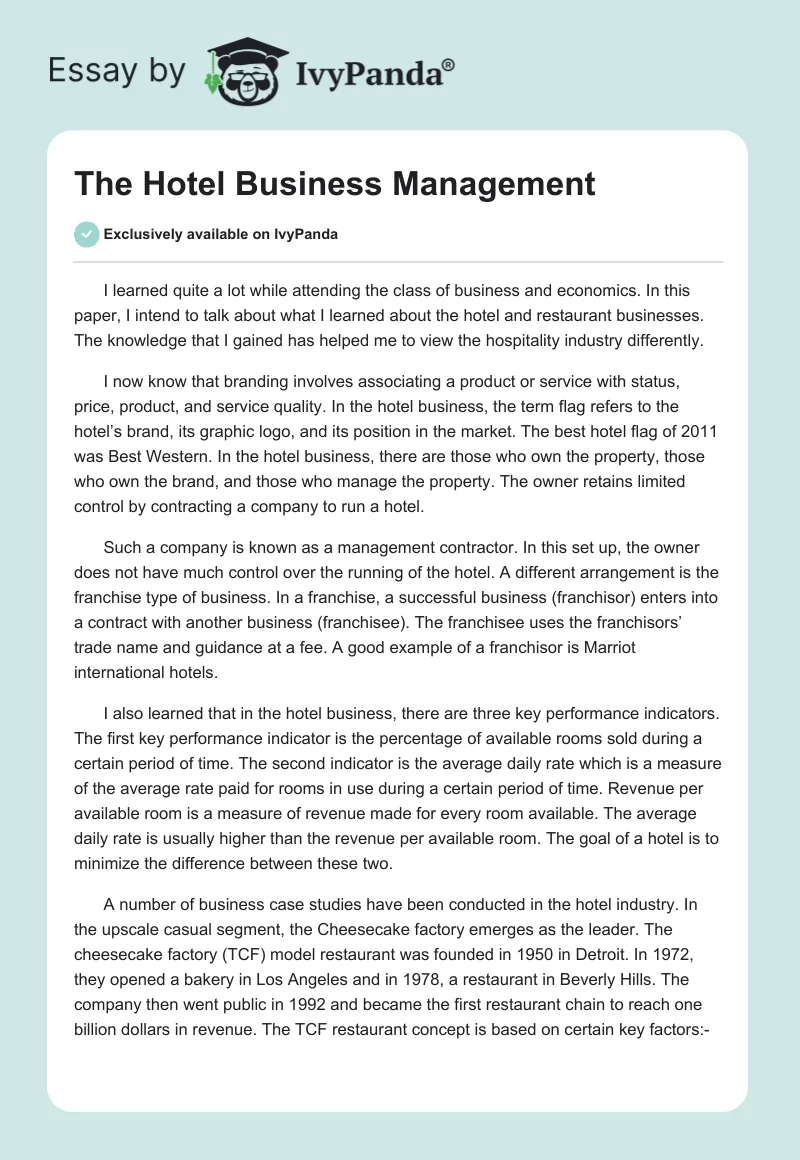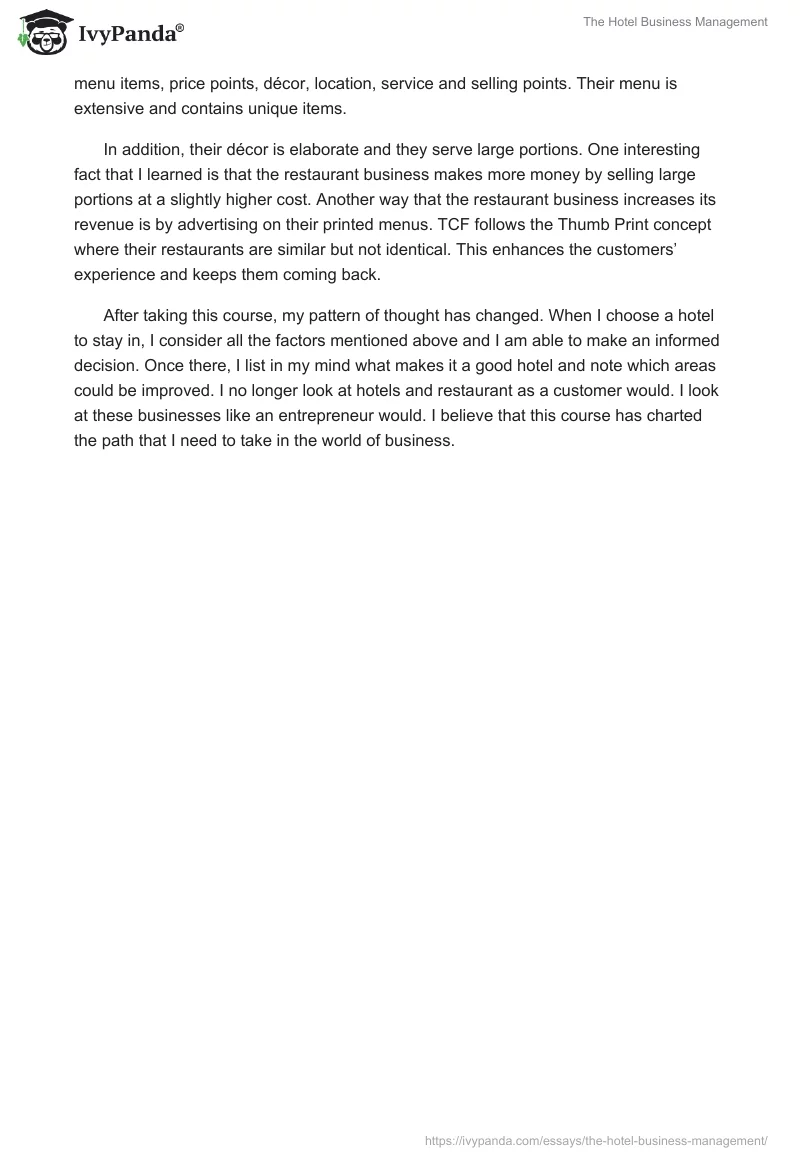I learned quite a lot while attending the class of business and economics. In this paper, I intend to talk about what I learned about the hotel and restaurant businesses. The knowledge that I gained has helped me to view the hospitality industry differently.
I now know that branding involves associating a product or service with status, price, product, and service quality. In the hotel business, the term flag refers to the hotel’s brand, its graphic logo, and its position in the market. The best hotel flag of 2011 was Best Western. In the hotel business, there are those who own the property, those who own the brand, and those who manage the property. The owner retains limited control by contracting a company to run a hotel.
Such a company is known as a management contractor. In this set up, the owner does not have much control over the running of the hotel. A different arrangement is the franchise type of business. In a franchise, a successful business (franchisor) enters into a contract with another business (franchisee). The franchisee uses the franchisors’ trade name and guidance at a fee. A good example of a franchisor is Marriot international hotels.
I also learned that in the hotel business, there are three key performance indicators. The first key performance indicator is the percentage of available rooms sold during a certain period of time. The second indicator is the average daily rate which is a measure of the average rate paid for rooms in use during a certain period of time. Revenue per available room is a measure of revenue made for every room available. The average daily rate is usually higher than the revenue per available room. The goal of a hotel is to minimize the difference between these two.
A number of business case studies have been conducted in the hotel industry. In the upscale casual segment, the Cheesecake factory emerges as the leader. The cheesecake factory (TCF) model restaurant was founded in 1950 in Detroit. In 1972, they opened a bakery in Los Angeles and in 1978, a restaurant in Beverly Hills. The company then went public in 1992 and became the first restaurant chain to reach one billion dollars in revenue. The TCF restaurant concept is based on certain key factors:-menu items, price points, décor, location, service and selling points. Their menu is extensive and contains unique items.
In addition, their décor is elaborate and they serve large portions. One interesting fact that I learned is that the restaurant business makes more money by selling large portions at a slightly higher cost. Another way that the restaurant business increases its revenue is by advertising on their printed menus. TCF follows the Thumb Print concept where their restaurants are similar but not identical. This enhances the customers’ experience and keeps them coming back.
After taking this course, my pattern of thought has changed. When I choose a hotel to stay in, I consider all the factors mentioned above and I am able to make an informed decision. Once there, I list in my mind what makes it a good hotel and note which areas could be improved. I no longer look at hotels and restaurant as a customer would. I look at these businesses like an entrepreneur would. I believe that this course has charted the path that I need to take in the world of business.


